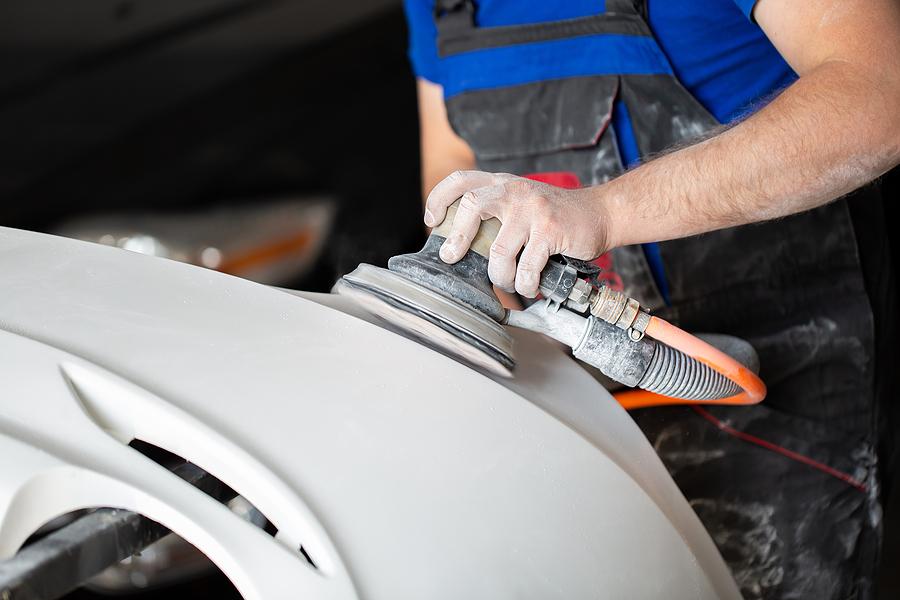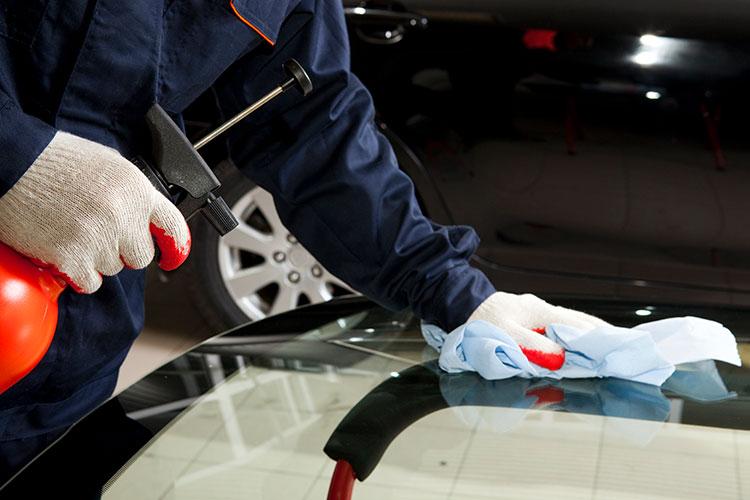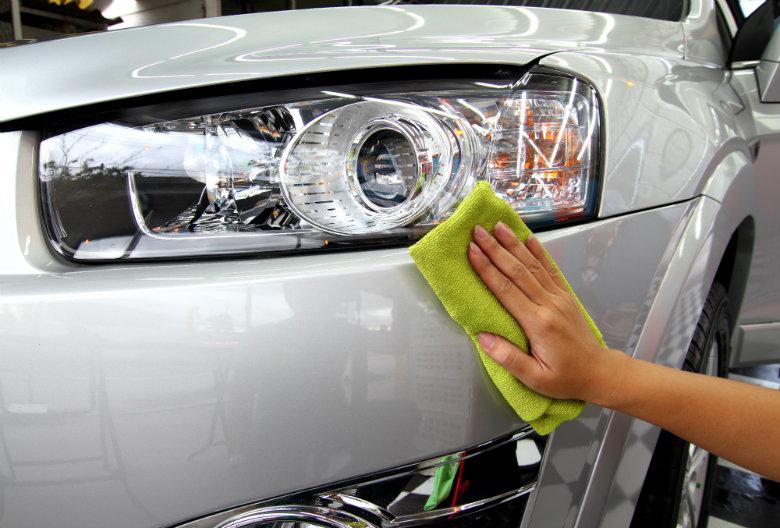Are you inclined towards taking matters into your own hands when it comes to your vehicle? Does the notion of addressing the diverse repair needs of your car with body damage right in the comfort of your garage resonate with you? Is achieving a level of professional-quality detailing and enhancements a goal of yours? If so, the following guidance is tailor-made for your pursuit of DIY auto body repair projects.
Sanding the Damaged Areas
If the car you’re fixing has big dents, grab a dent repair kit. Start by making those dents as smooth as you can. After that, get rid of any rust completely while making the metal sheet flat again. If you leave even a bit of rust, it can mess up your paint job. The rust might come back and ruin the freshly painted spot. To make the surface you’re fixing even, use an 80-grit sanding disc. If you want to save time, try an orbital sander. It’s quicker and gets the job done well.

Utilize High-Quality Fillers and a Mixing Board
Once the surface of the vehicle has been sanded, you may proceed to apply body fillers to the spot. Fill only within the bare, sanded metal area. Smooth mixing and application will help eliminate any pinholes.
When it comes to smoothing out those dents and scratches on your car, having top-notch auto body filler and a mixing board is key. Take the time for thorough preparation—it’s the secret sauce for successful auto body repairs!
Modern body fillers adhere well to just about any surface. You may use a plastic or metal scraper to apply the filler and let it dry.
Prepare the Surface by Degreasing
To get started, grab a sticky cotton rag infused with wax and grease remover to thoroughly wipe down and cleanse the panels. It’s crucial to ensure that every surface intended for painting is meticulously cleaned, removing any lingering traces of wax, silicone, grease, or oil. Consider using a glass cleaner like Windex as a potential alternative, but here’s a solid tip: it’s highly recommended to give your entire car a good wash first before applying the wax and grease remover for optimal results.

Illuminate Before Working
When you’re assessing a dent and gearing up for repairs, having the right lighting is absolutely crucial. Ensure that your garage is well-lit with powerful lights that can effortlessly illuminate every contour and crevice before diving into any body work on a car.
Get Quality Results with a Compressor and Paint Sprayer
Numerous car body repairs may necessitate fixing and refinishing a specific section of your vehicle. After obtaining a paint match (opt for the manufacturer’s recommendation for the best results), acquiring a top-tier paint sprayer designed for auto body work becomes essential. Look for a sprayer with a delicate touch, allowing you to apply multiple coats effortlessly over several days for an optimal finish.

Apply Your Primer
Before you begin spray painting, consider relocating your vehicle outdoors or placing it on a drop cloth to prevent any potential mess in your workspace. Prior to applying the primer, take the time to shield surrounding areas by using newspaper or plastic sheeting. Secure the edges with strips of low-adhesive masking tape to ensure precise coverage.
This preparation serves the purpose of safeguarding unwanted areas from getting painted unintentionally. Thoughtful taping is the key to avoiding issues like overspray. For instance, if you’re working on the back panels of your car, ensure thorough coverage for the rear wheel, trunk, and windows to achieve a clean and controlled painting process.
Clean the Car Thoroughly
Ensure the car is thoroughly cleaned before diving into the spray painting process. Create a mixture of alcohol and vinegar to wash the entire car body, eliminating any remnants of debris or dust from the sanding process.
This cleaning ritual is crucial to guaranteeing a seamless and thorough coat of paint on the car. To assess your cleaning efforts, run your fingers over the bodywork, ensuring a smooth and texture-free surface. This tactile inspection will confirm that you’ve done a commendable job in preparing the car for the upcoming paint application.

Add the Finishing Glaze
The application of finishing glaze in auto body work serves dual essential functions. Initially, when dealing with minute flaws or scratches in the paint coat, opting for a self-leveling finishing glaze can effectively rectify the issue. Secondly, in more extensive repair projects, the glazing process becomes a crucial intermediary step before the final coats of paint are expertly applied to the repaired surface.
Fixing Windshield Cracks
Addressing paint chips early is crucial to preventing rust, and the same applies to windshield chips that can lead to bothersome damage. Immediate action is key. Luckily, there are windshield repair kits available that utilize resins to effectively block cracks or chips, halting their progression and preventing further damage. Moreover, armed with the appropriate tools, you can also undertake the replacement of side power windows yourself!
More Visibility by Changing Your Headlights
When a headlight calls it quits or you’re aiming for a replacement that enhances visibility, the good news is that you can switch out your headlights using just basic tools. Ensure you opt for headlights that are a perfect match for your specific model to guarantee a seamless replacement process.
Replacing Broken Side Mirrors
Dealing with side mirror problems is a frequent occurrence in car body repairs. The good news is that you don’t necessarily need to head to a repair shop for a fix. Simply order replacement mirrors directly from the manufacturer and acquire panel removal tools from an auto body shop to tackle the repair yourself.
Master Car Repairs Through Excellent and Easy DIY Bodywork
Revitalize your vehicle with DIY auto body repair jobs! From dent removal to windshield crack fixes, empower yourself with the tools and techniques shared here. So tackle headlight replacements, side mirror repairs, and more, all in the comfort of your own garage. Achieve professional-quality detailing and enhancements with our comprehensive guide.